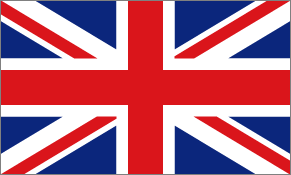Union Jack or Union Flag – what do you call the UK’s national flag?
Vexillologists know that either name is valid.
View or download a full explanation: Union Jack or Union Flag? An Official Flag Institute Guide.
Or check out the summary below.
Union Jack or Union Flag? A brief history
In 1606 King James VI and I ordered all English and Scottish ships – warships and merchant vessels – to fly the flag of his new realm of Great Britain from their main masthead.
This flag was described initially as the ‘British flag’ or ‘flag of Britain’.
The term ‘Union’ first appears in 1625, but what of ‘jack’?
Jack can have a diminutive sense, denoting something smaller or slighter than normal.
Thus it was used to describe a small flag flown by ships of this period from a flagstaff rigged on the bowsprit.
By 1627 it appears that a small version of the Union Flag – described thereafter as the ‘Jack’, ‘Jack flag’ or ‘King’s Jack’ – commonly flew in this position.
And by 1674 the Admiralty acknowledged two names: the formal ‘His Majesty’s Jack’ and the informal ‘Union Jack’.

During the following century, staysails replaced the bowsprit flagstaff and the main distinguishing flag of the Royal Navy became the Ensign.
So naval vessels began to fly the ‘Union Jack’ only when in harbour, and from a specially rigged ‘jackstaff’ in the bows.
The term ‘jack’ thus predates the ‘jackstaff’ by over 150 years.
Neither is ‘Union Jack’ a name specific to a Union Flag flown in the bows of a warship.
The Admiralty used both names interchangeably from the seventeenth century onwards, irrespective of use.
An Admiralty Circular of 1902 pronounced that either name was officially valid.
And in 1908 Parliament approved this verdict, confirming that ‘The Union Jack should be regarded as the National flag’.
Cdr Bruce Nicolls OBE RN (Retd)

